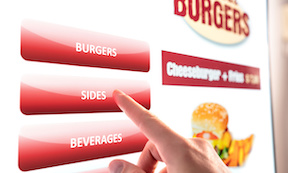College Students Want More From The Dining Hall Than Food

As students return to college and university campuses for their fall semesters, PYMNTS research reveals that today’s young consumers demand more options than just traditional dining halls and convenience stores.
For instance, today’s students are significantly more likely than older consumers to expand the option to get meals brought to them on demand, according to data from a June survey of nearly 2,000 consumers conducted for PYMNTS’ “Connected Dining” series. Specifically, the findings revealed that, while 38% of participants overall reported having used an aggregator in the previous six months, that share jumps to 52% for Gen Z consumers.
In an effort to meet this demand, aggregators are offering targeted offerings for colleges and universities.
For instance, Grubhub announced this past spring a partnership with campus payment solution provider Transact to enable students to view and make purchases from Grubhub’s marketplace via Transact’s app, paying with their campus cards.
DoorDash, for its part, has half-priced DashPass options for students and gives free three-month memberships to those who subscribe to homework help program Chegg Study.
“Acquiring these diners earlier in life and providing a great customer experience — the better we can do that, the better long-term retention that we see,” Madeline Maguire, senior director of B2B marketing at Grubhub, told PYMNTS in an interview earlier this year. “We want to acquire these diners now, so that when they age out of college, Grubhub is still their delivery provider of choice.”
Indeed, the rise of the on-demand economy has had impacts on student dining habits even beyond the food delivery space. For instance, today’s college students increasingly expect to be able to get their food needs met on their own schedules.
In a conversation with PYMNTS, Paul Kowalczyk, of hospitality firm Elior North America, which includes its Aladdin Campus Dining college and university foodservice arm, spoke to the increased student demand for convenient food.
“The need for 24/7 access is becoming the norm,” Kowalczyk said. “They want to be able to get something to eat on their time, and not just packaged items. We look at some of the machines and concepts that are available — you can make shakes, cookies, salads, pizza, and it’s fresh.”
Of course, remaining open 24/7 can be challenging from a labor perspective, but younger consumers are also more interested than their older counterparts in the kinds of digital technologies that can help ease these challenges for retailers, such as self-checkout capabilities.
Research from the study “Decoding Consumer Affinity: The Customer Loyalty To Merchants Survey,” a PYMNTS collaboration with Toshiba, found that 35% of consumers overall are “very” or “extremely” interested in switching merchants if offered more digital capabilities, while that share jumps up to 41% for Generation Z.
In an effort to meet this demand for round-the-clock options, universities are adding new self-service capabilities. For instance, Loyola University Maryland is adding Amazon’s “Just Walk Out” checkout technology to an on-campus convenience store, facilitated through Grubhub’s app.
Meanwhile, fast-casual chain Jamba has added autonomous kiosks to several universities’ campuses. In an interview with PYMNTS, Geoff Henry, then-president of the chain known for its smoothies and juices, explained that, given younger consumers’ amenability to new technologies, students tend to be the quickest to get onboard.
